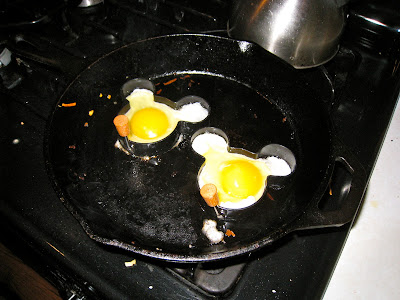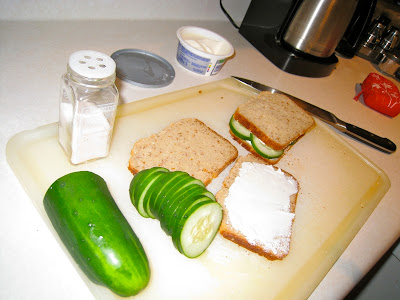"'I'm not part of Christmas!' cried the latke. 'It's a totally different thing!'" - The Latke Who Couldn't Stop Screaming, Lemony Snicket

I like the holidays. They may be my favorite time of year. I love holiday treats, holiday music and favorite holiday specials. I love the smell of California mornings on cold (but not too cold) days in December and all the ways my husband and I plot to surprise our kids on Christmas morning. As we head into December I plan to feature many of my favorite holiday books here on the blog. At this time of year "holidays" are usually synonymous with "Christmas" so yes, I will be writing about Christmas (as well as general winter) books. But tonight is the first night of Hanukah, so I find it only appropriate to acknowledge the holiday with one of the funniest holiday books I have ever read:
The Latke Who Couldn't Stop Screaming
.
The Latke Who Couldn't Stop Screaming is written by Lemony Snicket (illustrated by Lisa Brown). If you are at all familiar with his Series of Unfortunate Events books, you know that this isn't going to be your typical heartwarming holiday yarn. If you were totally turned off by
Pierre and
Monsters Eat Whiny Children in my
last post, this may not be the book for you. If you dig slightly deranged holiday tales, read on.
A latke is a potato pancake made from shredded potatoes and cooked in oil. It is commonly served as a part of Hanukah celebrations. As a holiday symbol, it is not as flashy as Christmas lights or as sweet as candy canes. And our titular latke, who has jumped out of a pan of boiling oil and run away, is frustrated--because none of the other holiday symbols he meets really understand what he is or how he fits into Christmas. He explains to each one, as he meets them, that he is not "hash browns" and not a part of Christmas. And that what he is a part of--Hanukah--is not Christmas. He relates the story of Hanukah to the Christmas lights, a candy cane and a pine tree as he encounters them (all the while growing increasingly--and hilariously--angry that they don't really get it). Finally, after he has slumped under a pine tree in frustration, he is found by a family. A Jewish family who recognize him immediately and want to make him a part of their Hanukah dinner.
This book is great because it works on two levels. I have Jewish friends who really do feel the way the latke does during the Christmas season: frustrated with the constant barrage of Christmas and the ignorance of some people who really don't understand that Hanukah isn't "Jewish Christmas" simply because it is celebrated during the same time of year. But it's also a book for those who want to learn more about Hanukah and understand, through the latke, why their Jewish friends might be so frustrated during this time of year.
 |
| Our angry latke, as illustrated by Lisa Brown |
After reading the book together my kids, of course, wanted to make latkes. Which had always been my plan.
Sweet Potato Latkes with Applesauce and Eggs
 |
| Brown's illustrated latke-making instructions |
This meal went through several revisions before it became what you see in the pictures. At first I had planned to make my latkes using frozen shredded potatoes. Not because I wanted to take the easy way out but because my husband is of the opinion that frozen potatoes fry up better than fresh. And I usually defer to him because he is the more skilled cook. Then my seven year old asked if I could make sweet potato latkes instead (he has a friend at school whose family makes them this way). I had not considered this at all. However, my seven year old has a deep hatred of shredded potato products. To the point that two nights ago he got himself so worked up over the apparent horror of tater tot casserole that he actually vomited. In my kitchen. Not wanting a repeat of this scenario, I acquiesced and resigned myself to the fact that I would be making sweet potato latkes from scratch. Though I did add in some frozen shredded potatoes to balance out the sweetness of the sweet potato.
Then I ran into the problem of what to serve with the latkes. Finally, buried deep on the third or fourth page of Google results (search term: "what to serve with latkes") was a
Smitten Kitchen post in which fried or poached eggs were offered as a suggestion. Having just purchased eggs, I decided this sounded like a fabulous idea.
"But can we use the Mickey Mouse egg molds?" my seven year old asked.
So there you have it. Sweet potato latkes with applesauce and Mickey Mouse shaped fried eggs. I'm still not sure what Mickey Mouse has to do with Hanukah but seeing as how we aren't even Jewish to begin with I guess we'll let it go.
Ingredients:
- shredded sweet potatoes
- shredded frozen potatoes
- shredded yellow onion
- olive oil for frying
- applesauce
- fresh eggs
- 4 tablespoons flour (I used a gluten-free flour blend)
- pinch of cayenne pepper
- pinch of salt
1. Peel your sweet potatoes and grate using a box grater. I started with three potatoes and used two. Wrap shredded potatoes in paper towel to wring out the moisture. Put the shredded sweet potatoes in a large mixing bowl.
2. Add frozen shredded potatoes to the mixing bowl. About 2/3 of my mixture was sweet potato and 1/3 was the regular potatoes. Mix together.
3. Using the grater, grate the onion into the mixing bowl. Add two eggs, salt, cayenne pepper and flour and combine with the potatoes.
4. Heat your olive oil in (preferably) an iron skillet. When the oil is hot drop small scoops of potato mixture in the skillet. Use the back of a spatula to flatten the latkes. Let cook on medium heat for 5 minutes on each side. I got better at this with each batch. The first ones were kind of fell apart because I didn't cook them long enough.
5. As you remove your latkes from the skillet, place on paper towels to absorb the excess oil. I made stacks with paper towels in between each latke layer.
6. Either simultaneously or after the latkes are finished cooking, make the eggs. I had to wait until the latkes were done because we only have one iron skillet and the egg molds don't work well in our other pans.
7. Serve your latkes and eggs with applesauce and/or sour cream.
I thought my sweet potato latkes were delicious (my husband thought they were too sweet and would have preferred using regular potatoes) and I take it as a good sign that my kids asked if they could take the leftovers to school for lunch.
Happy Hanukah, to those of you who are celebrating tonight!




























